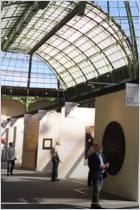
Talking Prices
Symbolic Meanings of Prices on the Market for Contemporary Art
Read or listen offline
Amazon KindleRecommendation
Getting a handle on the economics of the art market is much like grabbing smoke. Dealers are loath to discuss the financial side of their business and the private nature of their transactions frustrates researchers. Even the ostensibly open world of auctions is full of slippery practices. None of that deterred Olav Velthuis, whose exhaustive research into the art market yields a fascinating economic analysis. He explores the anticommercial bias of dealers and even finds some tangible factors that influence art prices. While impressive, Velthuis' work would have benefited from a more conversational, less academic tone. His fascinating price study, for instance, focuses on "coefficients" and "t-values" rather than on actual prices. Still, getAbstract recommends this study for its ambitious and intriguing attempt to shed light on a little-known corner of the economy.
Summary
About the Author
Olav Velthuis has been an assistant professor of sociology at the University of Konstanz and a visiting scholar at Princeton and Columbia Universities. He writes about economics for the Dutch newspaper De Volkskrant.
















Comment on this summary or Начать обсуждение